Big Bear Resort: SoCal’s Go-To Ski Destination
When it comes to skiing and snowboarding in Southern California, Big Bear Resort stands in a league of its own. Situated in the scenic San Bernardino Mountains, this alpine wonderland offers everything you could want from a winter getaway: snow-covered peaks, diverse terrain, and activities for every skill level. Whether you’re a first-time skier, a seasoned snowboarder, or a family looking for a fun-filled vacation, Big Bear Resort is the ultimate destination.
Comprising three distinct mountains – Snow Valley, Snow Summit, and Bear Mountain – Big Bear Resort delivers a unique experience at each location. From thrilling terrain parks to tranquil beginner slopes, there’s something here for everyone. Ready to plan your next winter adventure? Let’s dive into what makes Big Bear Resort Southern California’s favorite place for alpine adventure.
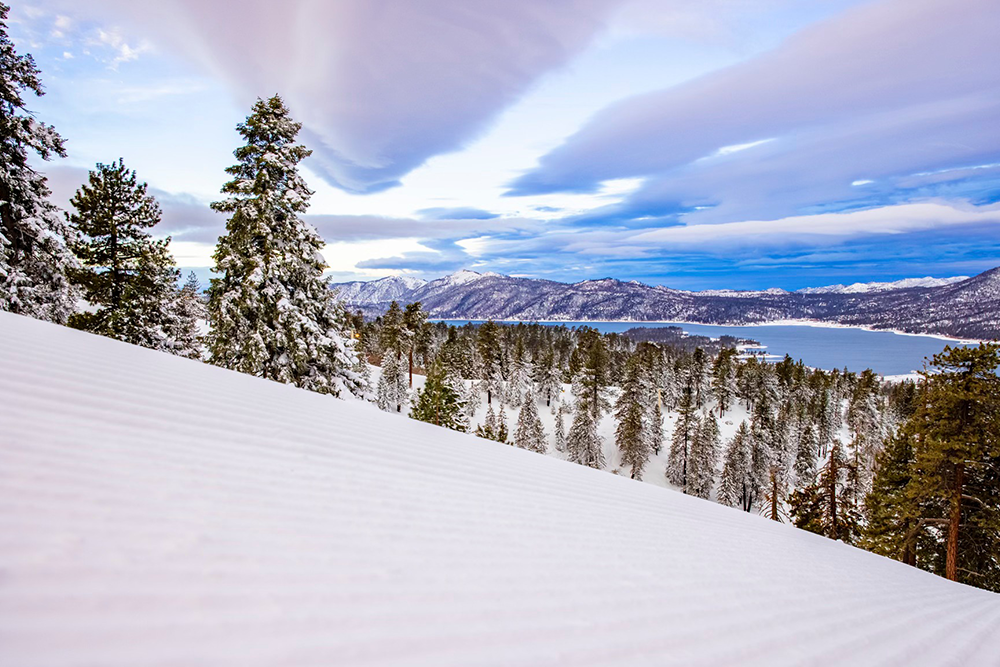
Big Bear Mountain Resort Overview
Big Bear isn’t just a ski destination – it’s a gateway to unparalleled mountain experiences. Spread across three incredible mountains, the resort offers over 400 acres of skiable terrain, breathtaking views, and activities for all ages. Each mountain has its own personality, ensuring that every guest finds their perfect fit.
- Snow Valley is perfect for beginners and families. It features gentle slopes, lessons, and fun activities like snow tubing and snow play areas.
- Snow Summit is great for intermediate skiers and snowboarders. It offers balanced runs, terrain parks, and mountaintop dining with views of Big Bear Lake.
- Bear Mountain is ideal for advanced riders and freestyle enthusiasts. It has SoCal’s only halfpipes, challenging terrain, and panoramic views of the San Gorgonio Mountains.
With state-of-the-art lifts, top-notch facilities, and a vibrant mountain culture, Big Bear Resort ensures that every visit is unforgettable. Whether you’re chasing adrenaline or simply soaking in the beauty of the mountains, you’ll find your adventure here.
Snow Valley
If you’re new to skiing or snowboarding, Snow Valley at Big Bear Resort is the ideal starting point. This mountain is designed with beginners and families in mind, offering a welcoming atmosphere and plenty of amenities to make your first day on the slopes enjoyable and stress-free.
- Learn with Ease: Snow Valley features a variety of gentle slopes and dedicated ski and snowboard lessons tailored for beginners of all ages. Friendly, experienced instructors focus on building confidence while teaching the basics.
- Family Fun: Beyond skiing, Snow Valley boasts a Snow Tube Park and Snow Play Area, perfect for non-skiers or families with young children. Everyone can enjoy the snow, whether they’re racing down tubing lanes or building a snowman.
- Night Sessions: Extend the fun with night skiing, which lets you glide under the stars on well-lit runs. It’s a magical experience that adds an extra layer of excitement to your trip.
- Favorite Run: Don’t miss Slide Peak, a gentle yet scenic trail that offers stunning views and a great experience for newer skiers.
With mid-mountain dining options and a relaxed vibe, Snow Valley is the perfect spot for a day of family bonding or learning to ski.
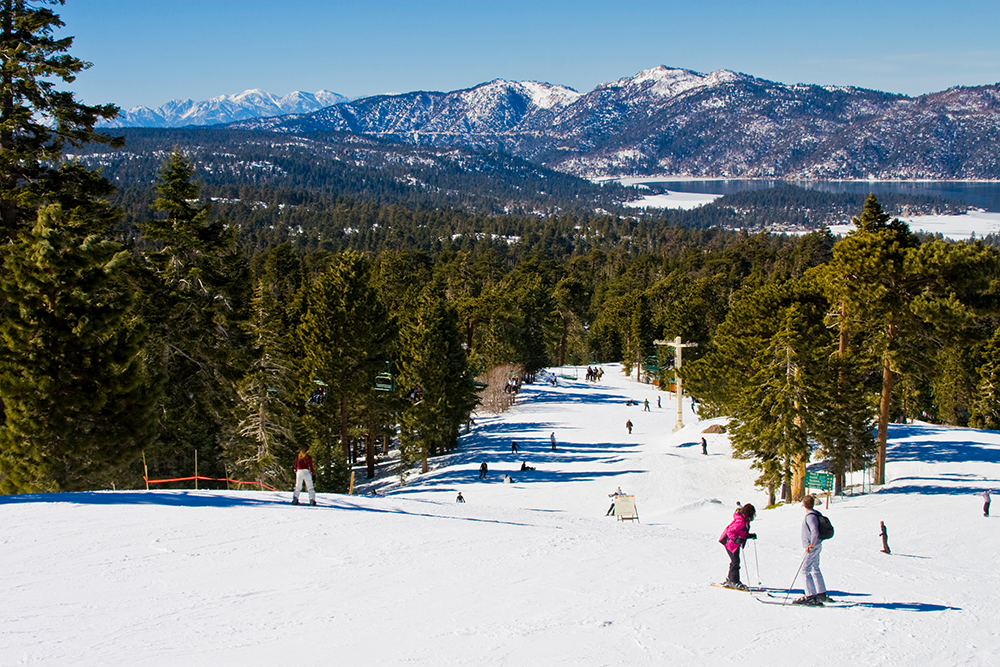
Snow Summit
For those seeking balanced terrain and a vibrant atmosphere, Snow Summit delivers the perfect mix of adventure and relaxation. Known for its intermediate-friendly slopes and breathtaking views, this mountain appeals to families and skiers ready to level up their skills.
- Diverse Runs: Snow Summit offers an extensive network of trails, ranging from mellow groomers to more challenging intermediate slopes. Whether you’re looking to cruise or push your limits, there’s something here for everyone.
- Ski & Snowboard Lessons: Snow Summit’s lessons help refine technique and build confidence. It’s the perfect place to improve your skills.
- Terrain Parks: Snow Summit’s terrain parks feature accessible elements for intermediate riders. They’re great for trying freestyle skiing or snowboarding.
- Stunning Views: Don’t miss the breathtaking mountaintop views of Big Bear Lake. They make every day on the slopes unforgettable.
- Night Skiing: Snow Summit offers night skiing sessions. The lit slopes and peaceful atmosphere create a unique experience.
For families, Snow Summit strikes the perfect balance, with exciting runs for adults and lessons for kids. Plus, its dining options offer a great chance to relax and recharge before heading back out.
Bear Mountain
For those who love variety and a bit of adrenaline, Bear Mountain stands out as one of the most dynamic areas at Big Bear Resort. With options for beginners, advanced riders, and freestyle enthusiasts, Bear Mountain is a must-visit for skiers and snowboarders of all skill levels.
- Freestyle Paradise: Bear Mountain has SoCal’s only halfpipes and top-notch terrain parks. Advanced riders come here to push their limits and show off tricks.
- The Highest Peaks: Bear Mountain boasts the highest lift-served peak in SoCal. The views of the San Gorgonio Mountains make every run unforgettable.
- Beginner-Friendly Areas: Bear Mountain isn’t just for thrill-seekers. It offers lessons and gentle slopes, perfect for beginners to learn and grow.
- Mid-Mountain Dining: Take a break at Bear Mountain’s mid-mountain dining spots. They’re ideal for relaxing and enjoying the stunning scenery.
With its high-energy vibe and focus on freestyle fun, Bear Mountain is a favorite among adventure-seekers while still offering a welcoming environment for beginners.
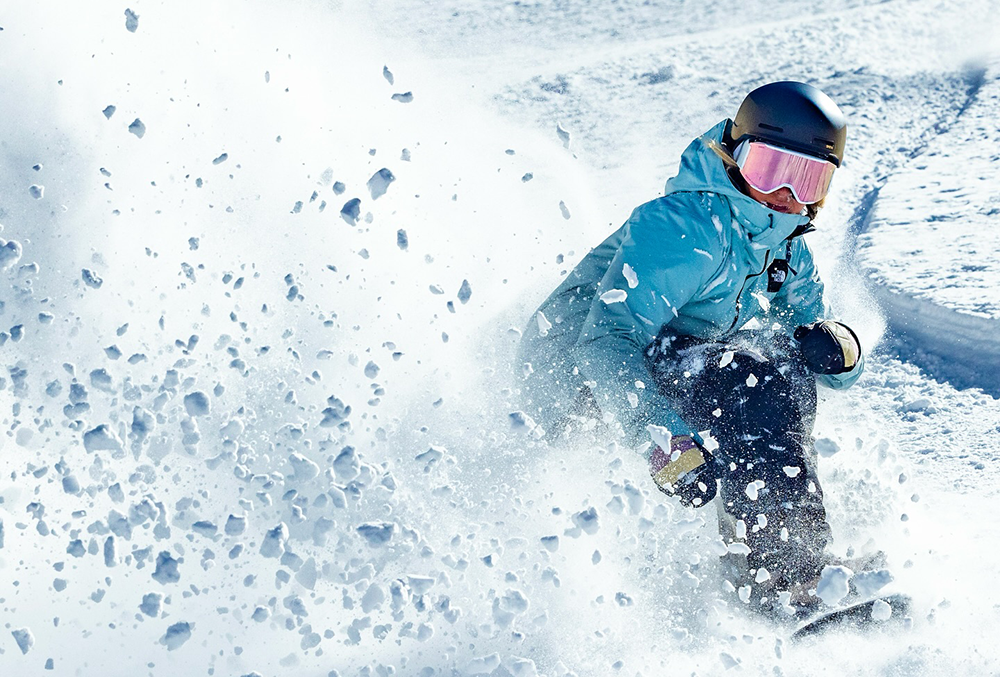
Terrain Parks
If freestyle skiing or snowboarding is your thing, you’ll feel right at home at Big Bear Resort’s terrain parks. Known for being some of the best in Southern California, these parks cater to riders of all skill levels, from beginners to seasoned pros.
- Innovative Design: The resort’s terrain parks are constantly evolving, with fresh features like rails, boxes, jumps, and SoCal’s only halfpipes at Bear Mountain.
- Parks for All Levels: Snow Valley and Snow Summit feature smaller, beginner-friendly terrain parks, while Bear Mountain is the ultimate playground for advanced freestyle riders.
- Signature Features: Bear Mountain’s terrain parks are world-renowned, drawing freestyle enthusiasts from across the globe to test their skills.
Whether you’re learning your first trick or perfecting your spins, the terrain parks at Big Bear Resort offer endless opportunities for creativity and progression.
Night Skiing
At Big Bear Resort, the fun doesn’t stop when the sun goes down. With night skiing available at Snow Valley and Snow Summit, you can keep the adventure going long after other resorts have closed for the day.
- Unique Atmosphere: There’s something magical about skiing under the stars. The floodlit slopes and quieter evening vibe make for a memorable experience.
- Great for All Levels: Whether you’re a beginner looking to practice or an advanced skier seeking extra thrills, night sessions provide plenty of opportunities to enjoy the mountain.
- Convenient Hours: Night skiing is available on select evenings, so be sure to check the schedule and plan accordingly.
Night skiing at Big Bear Resort is a unique way to make the most of your trip, offering extended hours of fun in a stunning alpine setting.
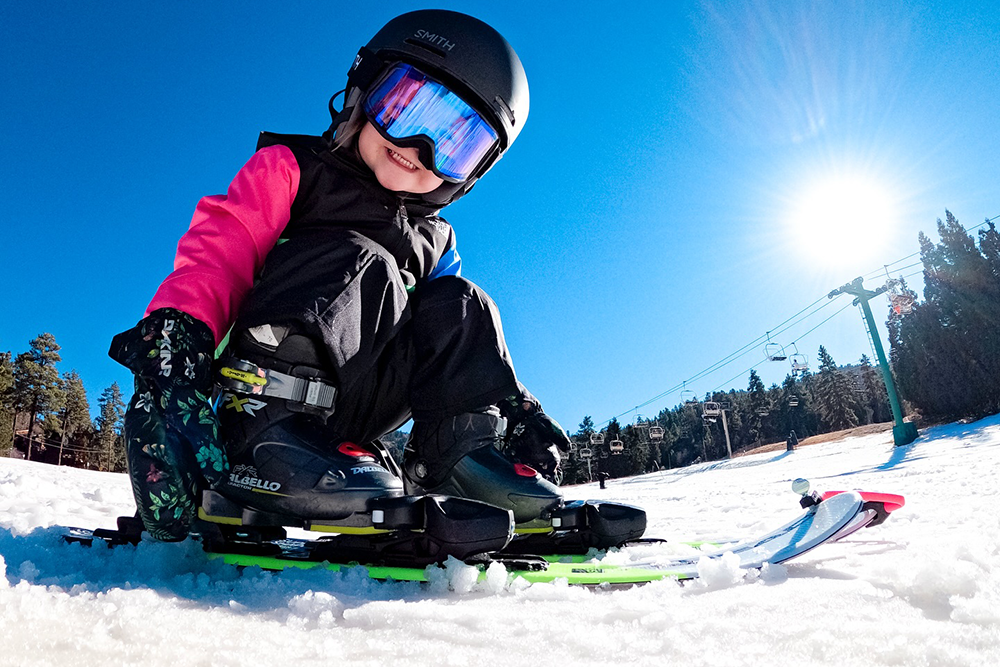
Ski Lessons
No matter your skill level, the professional instructors at Big Bear Resort can help you take your skiing or snowboarding to the next level. With lessons designed for all ages and abilities, everyone can improve their technique and confidence on the mountain.
- Group Lessons: Group lessons are great for social learners. They provide expert guidance at an affordable price.
- Private Lessons: Private lessons offer one-on-one coaching. They’re perfect for personalized attention and faster progress.
- Lessons for Kids: Kids’ programs combine learning with fun. They help young skiers and snowboarders build skills while having a blast.
- All Skill Levels Welcome: Lessons are available for everyone. Whether you’re a beginner or intermediate, there’s a class for you.
With patient instructors and a focus on safety, Big Bear Resort’s lessons ensure that everyone leaves the mountain with more confidence and skill than they arrived with.
Gear Rentals
Traveling light? No problem. Big Bear Resort offers a wide range of rental equipment to make your trip hassle-free and enjoyable.
- Top-Quality Gear: Rent skis, snowboards, boots, helmets, and more. All gear is maintained for top performance and safety.
- Beginner-Friendly Options: New to skiing or snowboarding? The resort offers easy-to-use gear for a comfortable learning experience.
- Advanced Equipment: Experienced riders can rent high-performance gear. It’s perfect for tackling more challenging terrain.
- Easy Pickup: Reserve rentals online or grab them at the resort. Rental shops are conveniently located at each mountain.
- Affordable Rates: Rentals are budget-friendly, with packages that include gear, lessons, and lift tickets to help you save.
By offering everything you need in one place, Big Bear Resort eliminates the hassle of traveling with your own equipment, allowing you to focus on the fun.
Dining Options
At Big Bear Resort, great food and stunning views go hand in hand. With a variety of dining options across all three mountains, you’ll never have to venture far to refuel after an exciting day on the slopes.
- Mid-Mountain Dining: Snow Valley and Bear Mountain have cozy spots mid-mountain. Enjoy a warm meal with incredible views.
- Mountaintop Dining: Snow Summit offers dining with breathtaking views of Big Bear Lake. It’s the perfect setting for a memorable meal.
- Casual Eats: All three mountains have base area dining. Grab a quick bite with options like burgers, sandwiches, and hearty soups.
- Après-Ski Vibes: End your day at the resort’s après-ski spots. Relax with drinks, snacks, and a lively atmosphere.
Whether you’re craving comfort food or looking for a scenic spot to relax, Big Bear Resort’s dining options cater to every taste and mood.
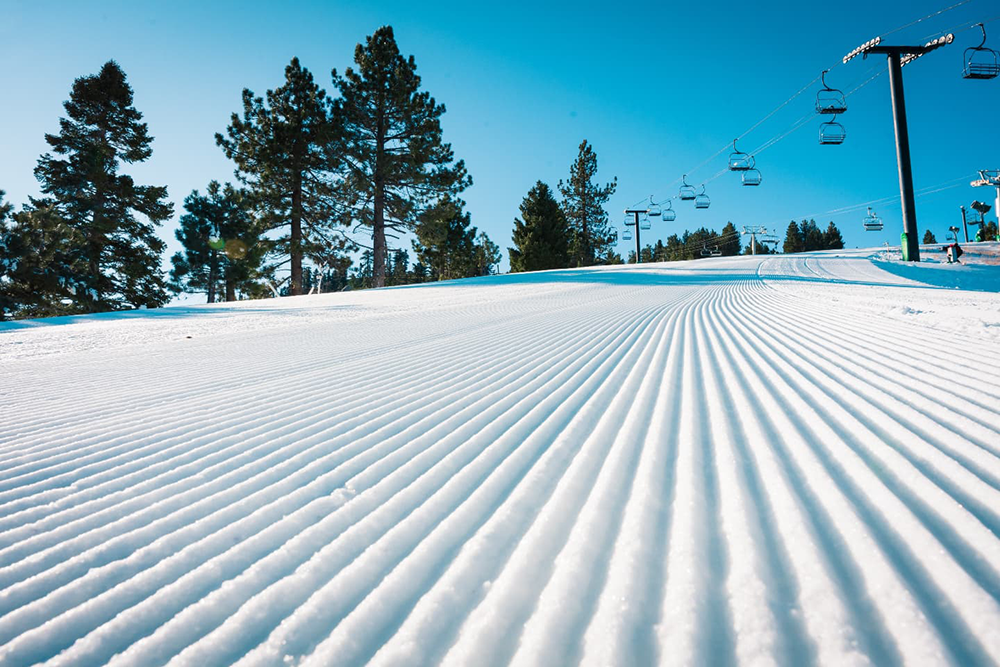
How to Get to Big Bear Resort
Getting to Big Bear Resort is both convenient and scenic, whether you’re driving or flying. Located just a few hours from major Southern California cities, it’s the perfect weekend escape or day trip for snow lovers.
- By Car: From Los Angeles, San Diego, or Orange County, Big Bear Resort is an easy drive, with well-maintained highways leading to the resort. Be sure to check weather conditions and carry snow chains during winter months.
- By Air: Visitors flying in can land at Ontario International Airport (ONT), located about 60 miles from Big Bear. From there, you can rent a car or take a shuttle to the resort.
- Scenic Mountain Drive: The journey to Big Bear is part of the experience, with stunning views of the San Bernardino Mountains along the way.
- Shuttle Services: Big Bear offers shuttle options for visitors who prefer to skip the hassle of driving, providing a stress-free way to get to the slopes.
No matter how you choose to arrive, the trip to Big Bear Resort sets the tone for an unforgettable alpine adventure.
Big Bear Ski Deals
Whether you’re a first-time skier, a seasoned snowboarder, or a family seeking a winter retreat, Big Bear Resort has it all. Snow Valley offers beginner-friendly slopes. Bear Mountain delivers freestyle thrills. Snow Summit boasts stunning scenic beauty. Big Bear Resort is Southern California’s top spot for skiing and snowboarding.
Ready to plan your Big Bear adventure? Don’t forget to check out Skier Deals for exclusive Big Bear Resort ski deals, discounts, promo codes, and packages to help you save on your trip. With everything Big Bear Resort has to offer, there’s no better place to experience the magic of winter in SoCal.